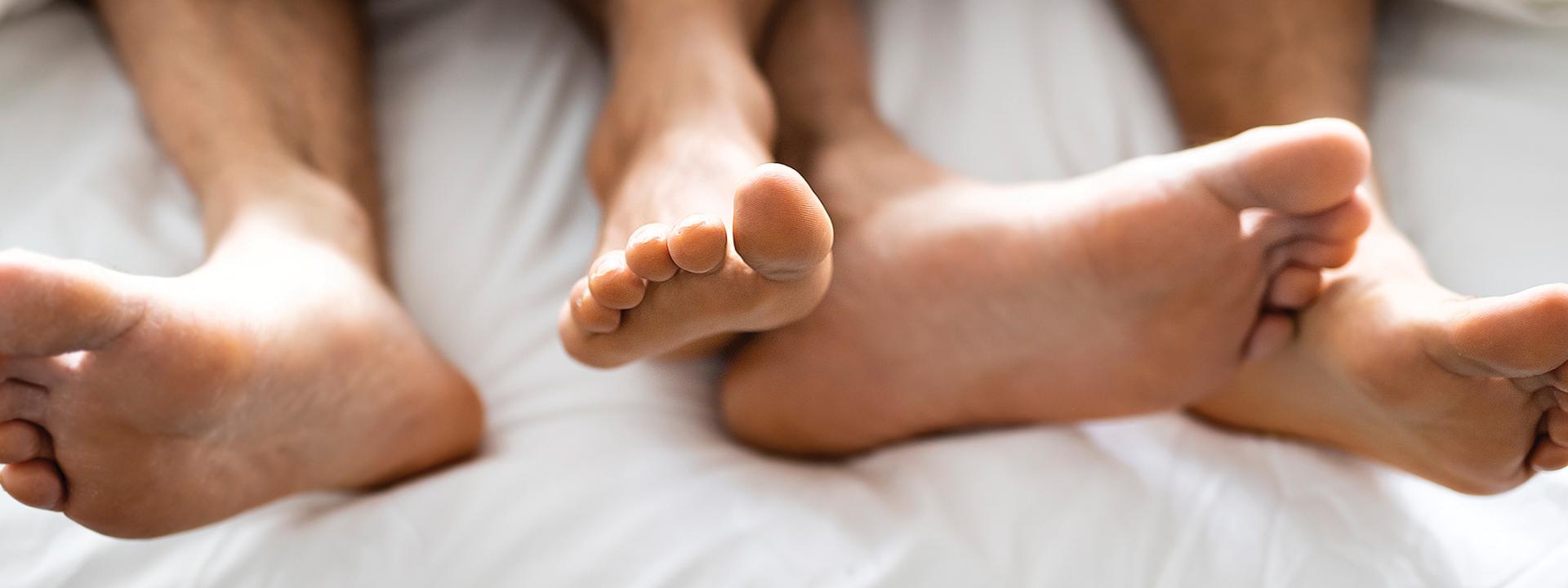Sex, pleasure and HIV prevention
Listen to this article
“The words sex and pleasure until recently weren’t applied to HIV prevention,” says HIV prevention advocate and therapist Damon L. Jacobs. “For me, mental health and sexual health are one and the same.”
“Fun for me is just a general sense of something that brings me a sense of being alive.” adds long-term survivor and HIV advocate Rodney McCoy, Jr.
In this issue’s cover story, the two advocates and friends have a lively conversation about how pleasure and HIV prevention come together. Sex plays a part in how we see ourselves, express ourselves and identify ourselves.
Talking openly and candidly about sex shouldn’t just happen between the sheets; it should also happen at your doctor’s office or anywhere you receive services. Stigma, guilt and shaming are not effective HIV prevention strategies.
Rod and Damon’s conversation sets the tone for the article that follows it, written by Rod. In “Sex-positive kink,” it’s no one’s place to judge how anyone enjoys sex. Rod recalls going to one clinic after a gonorrhea diagnosis and receiving a moralizing lecture from a counselor. He never went back to that clinic. One bad experience can have ripple effects. “We cannot let our own sexual beliefs and behaviors dictate what we tell our clients,” Rod says.
Our own communities need to be more accepting and less judgmental. We’ve reprinted one of the first commentaries POSITIVELY AWARE published about PrEP shaming, from 2015. Mind you, the language it uses is very much of its time, starting with the headline: “You say ‘whore’ like it’s a bad thing.” Paraphrasing Enid Vázquez, we mislead people into believing they are safe if they don’t have multiple sex partners.
And speaking of talking about sexual health, lead contributing writer Larry Buhl looks at how making patients and care providers more comfortable talking about sex can help in “Closing HIV prevention gaps in Detroit.” The Motor City has the highest incidence of HIV in Michigan amidst huge disparities. For every two white men living with HIV, there are 15 Black men living with the virus.
“Sexual health is a huge part of individuals’ lives, and we want to equip care providers with tools that will eventually make [discussion of sex] a standard practice,” says Elizabeth Lockhart, an assistant scientist at Henry Ford Health’s Center for Health Policy and Health Services Research.
Many of us stress over taking our pills or missing doses. Victoria Noe writes how “Pill fatigue” is a real thing and what to do about it. “What if I forget to take my HIV meds—or even lose them?” is one of Tim Murphy’s biggest nightmares, so he talks with Dr. Antonio Urbina, longtime medical director of Mount Sinai’s HIV clinic in Chelsea, who provides some insight to allay Tim’s fears. Through a series of events, though, Tim writes about “My unexpected treatment failure” and how it happened. It’s a reminder that you have to always advocate for your own health.
Women living with HIV who experience menopause are at increased risk for conditions such as cardiovascular disease, bone loss and frailty. Drs. Sara H. Bares, Sara Looby and Michael T. Yin write about “Navigating menopause with HIV.” They include a clinical trial being planned that will evaluate menopausal hormone therapy in women living with HIV and provide data to inform future treatment guidelines.
Our report on the AIDS 2024 international conference in Munich, Germany, this past July highlights three key announcements. The six-month injectable lenacapavir was found to be an unprecedented 100% effective in protecting cis women from HIV—but questions arise over affordable accessibility. A study found that doxyPrEP reduced the rate of STIs among men who have sex with men by 80%. Plus, there was news of a seventh person to be cured of HIV—the “next Berlin patient”—through a stem cell transplant.
We report on another conference—the National Latinx Conference on HIV, HCV and SUD (substance use disorder)—to examine the state of HIV and care in a region that blurs the line between the U.S. and Mexico. It spans nearly 2,000 miles from the Pacific Ocean to the Gulf of Mexico and reaches 62.5 miles (100 km) on either side of the border. According to a 2016 study, if this region were a U.S. state, it would rank second in deaths from hepatitis, third in deaths related to diabetes and last in access to health care. No wonder that getting people into HIV care is especially challenging.
It takes collaboration and communication between care providers on both sides of the border and community health workers are essential to connecting people to the care they need. Because of the ground it covers, this report also appears in Spanish in this issue. It is followed by Spanish language versions of two articles that appeared in the July+August issue—the reluctance of Texas ADAP to add Cabenuva to its formulary and a change in Puerto Rico’s version of ADAP that could potentially disrupt delivery of HIV medications. It underscores the need to make information as accessible as possible in different languages, particularly the communities in which Spanish is the predominant language, which POSITIVELY AWARE will continue to address in future issues.
Sometimes I think it’s not the virus that gets in the way of our pleasure and living our lives so much as it is the stigma, fear and isolation that can arise because of it.
You are not alone.


